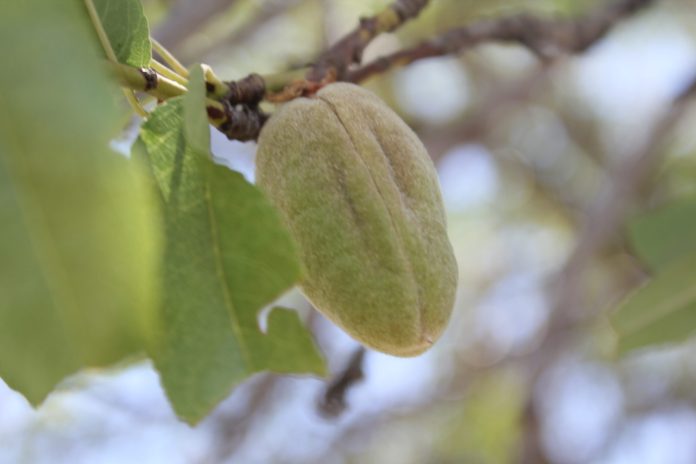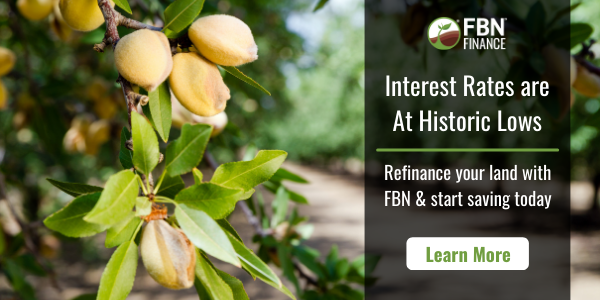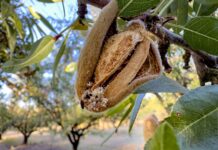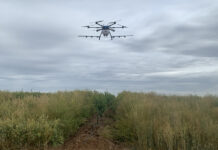
Hull split in almond signals that it is time to apply treatments to control navel orangeworm. This timing is critical. Split hulls release a scent that attracts female NOW moths who lay their eggs on the suture of the splitting hull. Fungal spores can also invade the almond hull at split and cause hull rot.
In an Almond Board of California Training Tuesday webinar, almond experts recommended tree inspections starting at the top of the canopy on the southwest corner to detect onset of hull split.
Almond hulls split as the fruit ripens. If the entire suture on the hull opens and exposes the shell when the nut is squeezed, hull split has occurred. Timing of hull split can vary depending on weather and variety. The almond industry’s leading variety, Nonpareil, typically splits in early to mid-July.
It is the stage prior to a visible hull split that growers want to catch. When the hull is at the deep “V” stage, susceptibility to NOW infestations and pathogens that cause hull rot increase. Monitoring the crop for this stage is important.
Nuts mature faster at the top of the tree canopy, and that is where monitoring must begin. Using a ladder, lopping off upper branches of smaller trees or even using a pruning tower will allow close inspection of nuts from the top of the canopy to determine their stage of maturity.
Noting any blank nuts, or those lacking a kernel, is important as those are the first to initiate hull split, often several days before sound nuts. Mel Machado, vice president of grower services for Blue Diamond, calls blanks ‘a warning shot’ that alerts growers and farm managers that the hull split is imminent.
Experts advise paying attention to trees on the edge of the orchard as their nuts ripen earlier.
When planning hull split applications, they note that it is better to be early than late. Hull split applications should be made no later than at 1% hull split. That is the most effective time to spray for NOW as the timing often matches initiation of the second flight of NOW.
Machado also advises that once hull split begins, the entire orchard should be sprayed in five days or less. Since nuts at the tops of the trees are most vulnerable, consideration of aerial applications should be made to achieve best coverage. The best time to spray is early morning or at dusk.






















